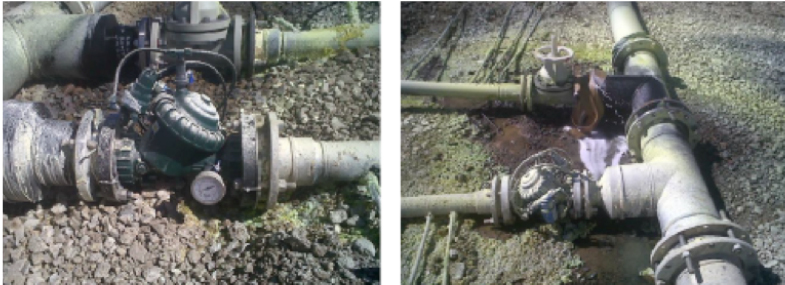The Challenge
Faced with erratic pressure control and inaccurate leaching rate control, a Chilean mining company, Compañía Minera Lomas Bayas S.A., needed an effective solution. The company had been using manually-operated diaphragm valves and orifice plates to control the flow and leaching rate inside the leaching modules, which meant personnel had to be present at all times to manually open and close the diaphragm valves, which incurred high operational costs.
In addition, the poor quality of the Raffinate solution meant that suspended particles from the fluid were getting stuck in the shaft of the manually-operated diaphragm valves. Personnel were required to manually fix the valves every time they got stuck, giving rise to operational safety concerns. Another reported problem was the continuous clogging of the emitters in the drips. Initial clogging led to a rise in pressure and as the other manual valves could not compensate for this additional pressure, more emitters were quickly clogged and this reduced the operational time of the drips.

The Solution
Rising to the challenge, the team at BERMAD Fluid Solutions (BFS) conducted a two month trial, installing two BERMAD MN-120 hydraulically self-operated, pressure reducing / flow control valves. During the two-month trial period, the BFS team provided ongoing in-field technical support and trained the operators and maintenance personnel at the mine. Together, they measured the volume at each point at a specific time interval in order to gauge the equivalent flow at each point and determine the average for each module.
As a result of the trial, the management at Lomas Bayas decided to acquire an additional 267 units of BERMAD MN-120 4” and 100 units of BERMAD MN-120 6” valves. Read the full case study to learn more about BERMAD’s winning solution.









